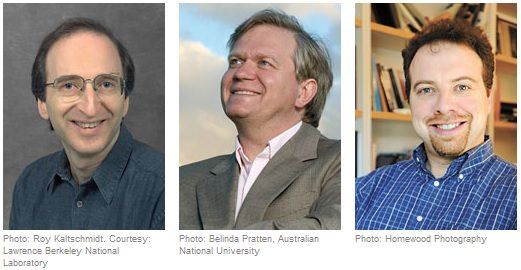A little more than 40 years ago – 42 years in July, to be exact – men walked on the moon for the first time. This achievement was a landmark for humanity – not only in that it demonstrated a vast technological ability but also because it was that “giant leap for mankind” – as Neil Armstrong so eloquently put it – in an eternal quest for the stars.
Most of us grew up watching the space program – the first orbiting satellites, the Apollo program, the Space Shuttle and International Space Station. We became accustomed to constant “leaps for mankind” in technological achievement. We shared in the sorrows – the Challenger explosion, the loss of Columbia high over Texas – and we shared in the numerous heroic successes of our astronauts and the scientists and engineers who formed NASA.
With the ending of the Shuttle program, many Americans are now beginning to feel that all those glory days are behind us. I’ve heard people lament the changes in direction of our policy of space exploration as though the adventure of discovery beyond the pull of Earth’s gravity is all but over.
I would like to remind you that we are not at the END of the Space Age. We are still merely at the beginning. Current circumstances – mainly economic ones – might make it seem that we are unable to advance – or that major advancements might not come in our lifetime. But there are still a lot of things going on that make me believe we are rapidly entering a new age of civilization that ultimately will take us beyond Earth and to the stars. All things considered, this new age is likely to be the kind of pivotal movement in history that occurred as Western civilization emerged from a state of decline through what became known as the Renaissance – literally the REBIRTH of civilization.
This new age we can call the Space Renaissance, because it comes at a time when humanity faces dire predicaments on Earth while possessing the technology to approach solutions through advancing into extraterrestrial space. And it will bring about vast changes in the way we think about ourselves – our science, our politics, our economics, even the social contracts that bind us together as human beings. It will alter, in fact, the way we regard mankind’s position in the universe, in much the same way as the notion of Renaissance astronomer Copernicus more than 500 years ago that the Earth revolves around the Sun.
The Space Renaissance will both create such changes and be forged by them. As ideas advance into new technology and new endeavours, those developments will spawn new ideas. This is the way humans have always advanced – and are advancing even today.
There is no question – in my mind – that we are progressing rapidly toward a time that human beings will routinely travel through extraterrestrial space – tapping resources such as energy, minerals and even water – not as an Earth civilization but as a Solar Civilization. Not everyone might agree with that assessment. Some are simply too pessimistic to believe that mankind will be able to work together long enough to make it happen before destroying our planet. Others think it is too futuristic to contemplate – especially during a time when we are faced with widespread joblessness, rising debt and mortgage foreclosures at home, along with wars and revolutions in the Middle East and Wall Street protests.
I have to remind my friends that although many of the ideas of space exploration and development seem spun from science fiction, in many respects they are not of the future but of the present. Consider this:
• Hundreds of people have already traveled in space.
• The International Space Station continues to operate, conducting experiments and research that have widespread implications not just for future space missions but also for developments here on Earth.
• Daily, we send and receive communications transmissions that are bounced off of manmade satellites.
• We have robots exploring other parts of our Solar System, including the surface of Mars, and devices such as the Hubble Space Telescope transmit images that provide ever increasing insights into the expanse of the Universe.
In short, we are already THERE – in space. And this is happening just 50 years after the first space missions that sent men into orbit. In many ways, it is akin to the explorations of the New World that occurred in the decades after Columbus first sailed across the Atlantic during the age of the first Renaissance centuries ago.
Now, in the decades ahead many more changes are sure to follow. I see it as a natural progression of human civilization, just as the exploration and development of the New World led to new nations built on new ideas of human freedom and democracy that were unprecedented in human history.
And just as developments then called for new ideas – new ways of looking at mankind and our relationship to the planet – there will be new ways of considering our relationship with other human beings today. There will be a need for unprecedented international cooperation as we advance not just on the basis of national interests but of the interests of all humanity coexisting on one planet. The old economic models that competed during the last century as Capitalism and Communism will give way to new models that rely on extensive cooperation between governments and private enterprise. In many ways, this is already happening. Consider the recent trends in the U.S. Space Program, in which greater reliance is placed on other governments and private companies to propel our astronauts to new discoveries.
And it in this latest development there are many opportunities opening up already to pave the way for the future of commercial space. This is certain to accelerate as systems that have failed in their missions to achieve human success are replaced by new efforts based on the long-term goal of protecting planet Earth while reaching beyond the confines of its gravitational pull toward other worlds. Space-based solar power is a prime example, with the potential to provide energy to Earth and habitats beyond.
So, the message I would like to share is that we are still heading out there, toward the stars. The same ambitions that drove Europeans to discover and explore new worlds, and inspired inventors like the Wright brothers to keep pressing forward until man could take flight, and pushed the United States into the space race that landed men on the moon are still with us, driving us ever onward and outward.
We are now, and will continue to be propelled by a new energy and new ideas into a new age for civilization. Another Renaissance – SPACE RENAISSANCE.


